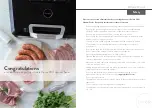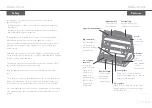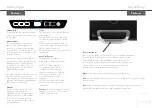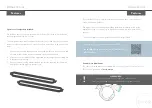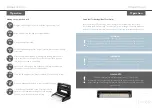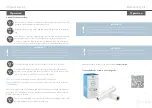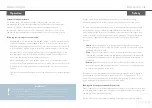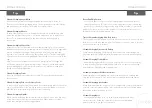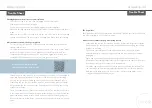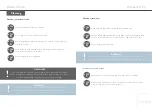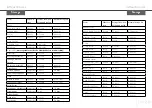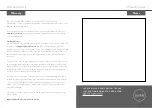
INSTRUCTION | P16
INSTRUCTION | P17
Re-sealing Chip Packets
You can utilise the seal strip to re-seal packaging that has already undergone a
commercial quality seal. This allows half consumed packets of chips, crackers and
cereals to be resealed by placing on sealing strip. When resealing, ensure that the
bag does not reach into the vacuum chamber, as it will crush delicate items. Use
this method to reseal suitable packets only.
Tips for Vacuum Packaging Non-Food Items
The Luvele Deluxe PRO Vacuum Sealer can also be used to protect non-food items
from corrosion, oxidation and moisture. The same process can be used to vacuum
seal non-food items as food items.
Vacuum Packaging Silverware & Cutlery
When vacuum packaging silverware and cutlery make sure all sharp edges are
covered with a cushioning material such as paper towel to avoid puncturing bag.
Vacuum Packaging First Aid Kits
Vacuum packaging first aids kits to store in your home, boat or car is a great way
to keep items dry and free from dirt and mould. Also consider vacuum sealing
flares, batteries, flashlight, candles and matches.
Vacuum Packaging for Outdoor Activities
When camping vacuum packing your clothes can save space in your bag and
keep dry at the same time. Also, vacuum seal your maps, matches and snacks.
Vacuum Packaging paint brushes
When painting around the home you can vacuum package your wet paint brushes
between coats rather than washing. This is particularly useful for oil based paints
that require mineral turpentine to clean.
Vacuum Packaging Ice
You can vacuum package ice to use as an icepack for picnics and other
outdoor activities. When the ice melts you then have fresh drinking
water or refreeze to use again as an icepack.
Vacuum Packaging Meat & Fish
For the best results when vacuum packaging meats and fish, pre-freeze for
1-2 hours before vacuum packaging in bag. This helps meats to retain their shape
and prevents any liquids from overflowing into vacuum sealer.
Vacuum Packaging Cheese
To keep cheese fresh you can vacuum pack after each use. Make the bag extra
long when sealing for the first time. Cut sealed edge when you’re ready to use
cheese. To re-package simply place the cheese back in to the bag and re
vacuum seal.
Vacuum Packaging Vegetables
Vegetables need to be blanched before vacuum packaging. This stops enzymes
from affecting the flavor, colour and texture of the vegetable. To blanch vegetables,
place in boiling water for approximately 1 minute. After blanching place the
vegetable into iced cold water to stop the cooking process. Then dry thoroughly
on paper towel before vacuum packaging. There should be no excess water in the
bag.
Note: Cruciferous vegetables such as broccoli, brussels sprouts, cabbage and
cauliflowers naturally emit gases during storage. Therefore, after blanching and
vacuum packaging they must be stored in freezer only. Mushrooms and garlic
should not be vacuumed packed.
Vacuum Packaging Fruits
Fruits can be vacuumed sealed whole or sliced. For longer lasting storage place
fruits in freezer.
Vacuum Packaging Coffee or Powdery Foods
To prevent food particles from being drawn into vacuum pump place a coffee filter
or piece of paper towel at the top of bag before vacuum packaging. You can also
place the food in its original bag inside a vacuum sealer bag.
Vacuum Packaging Liquids
Before vacuum packaging liquids such as stock, pre-freeze in a ice cube tray until
frozen. Place frozen cubes into vacuum sealer bag. When ready to use place
frozen cube straight in to dish being prepared.
Tips
Tips


